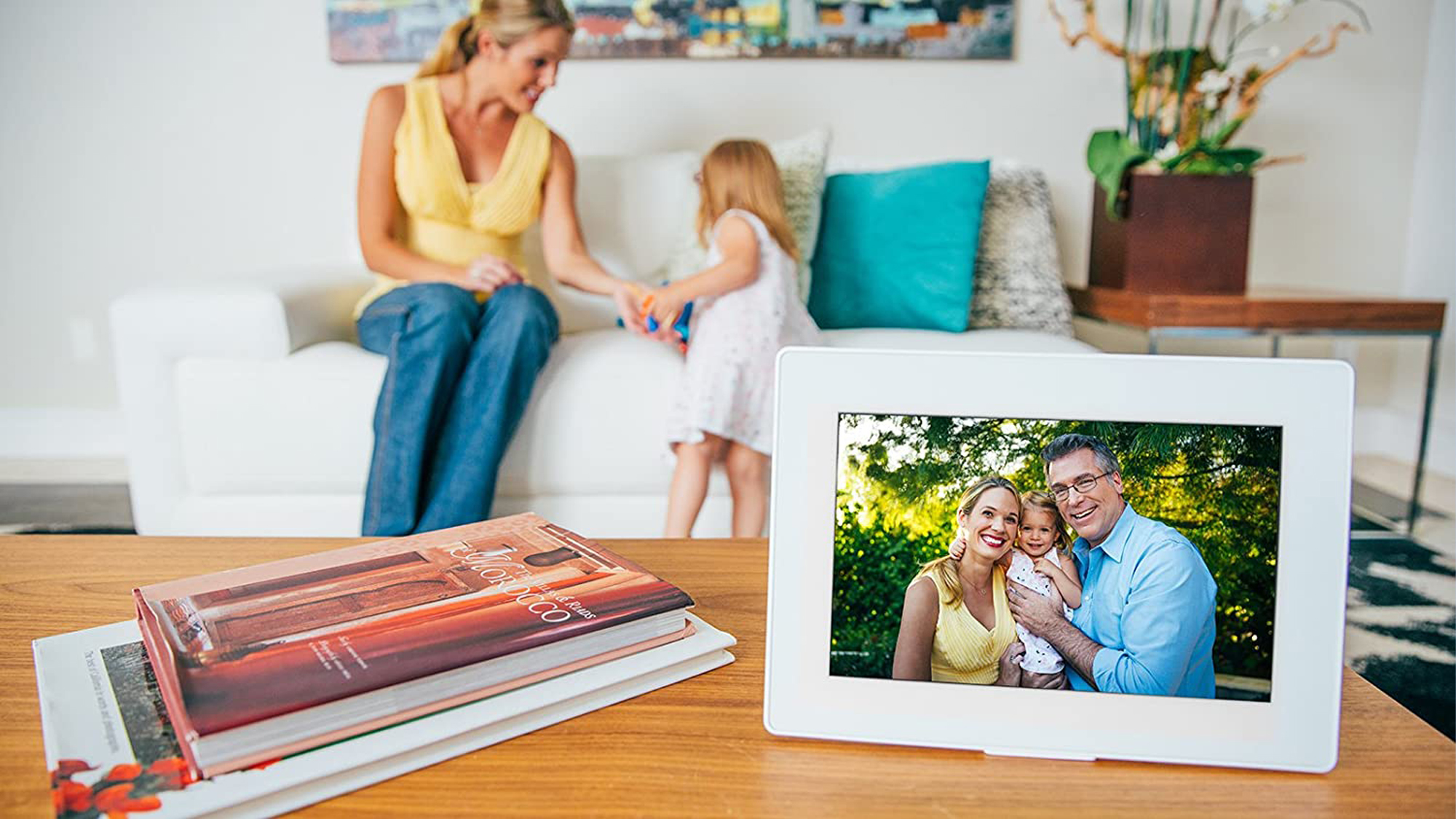5 things to look for when buying a digital photo frame
A picture perfect investment

Smartphones and the best cameras have made it easier than ever to capture special moments and immortalize them through photography. The challenge has been how to take those photos and display them in the home with the ease of polaroid or film pictures. Printing physical copies of digital pictures is one option, but this can be time consuming and expensive if you’re printing images frequently.
You also may not have the space to display all of your favorite pictures from your and your family’s camera reels, now that we’re taking so many more pictures than before. Fortunately, we now have the best digital photo frames to solve this problem.
Like a regular photo frame, a digital photo frame can be placed on any household surface and used to showcase your favorite pictures. Digital frames cycle through slideshows of images and automatically update with newer imagery. No longer do you have to choose which picture to give precious wall or shelf space; now you can showcase as many pictures as you want, all in one compact package.
Of course, the value you get from your digital photo frame will depend on how much the device fits your specific needs. Maybe you prioritize photo quality, because you’ll be showcasing pictures taken from advanced cameras? Perhaps you mostly want to look at portrait photographs, which means you’ll want a digital photo frame in that orientation. Or maybe you’re buying this as a gift for someone and want to be able to remotely upload your pictures, so they can keep up to date with your activities. Different frames will offer different features, so it’s important to assess potential options based on your individual criteria.
Here are 5 key features that you’ll want to keep in mind when choosing a digital photo frame.
Atatat Digital Photo Frame: was $59 now $49 @ Amazon
The Atatat Digital Photo Frame delivers a crisp 1080p, 8-inch display is our top value pick and accepts images via SD Card or USB thumb drive. We also like the wide viewing angles, multiple settings options and the built-in clock and calendar.
1. Size and orientation

Just like with classic photo frames, a digital frame can come in many different sizes and might be displayed in either landscape or portrait orientations. Depending on where you want to display your frame, you’ll want to pick a device that is large enough to show your photos in detail but small enough to be practical in your home.
There is no "best" size, just the size that works best in your space, although on average these frames tend to feature screens between 9-10 inches wide. Another consideration is the aspect ratio of the screen. Nowadays, many people prefer screens that have a 4:3 ratio as this lets you display pictures from smartphones, without black bars along the sides (known as pillarboxing).
Sign up to get the BEST of Tom's Guide direct to your inbox.
Get instant access to breaking news, the hottest reviews, great deals and helpful tips.
Then there’s the orientation: Some frames can be displayed both vertically and horizontally, allowing you to turn them as needed to accommodate different physical spaces and different photos. However, some will only work and stand upright in one orientation. Be sure to check this functionality before you make your purchase – you don’t want to find yourself constantly staring at photos that are rotated by 90 degrees.
2. Photo resolution

Poor quality pictures will look blurry or grainy in any medium, but even the best photos will look blurry if your screen resolution is low. Resolution refers to the number of pixels per inch (PPI) in an image, horizontally by vertically, with higher PPI resulting in clearer, more defined images.
Digital photo frames vary in resolution so make sure to check what each brand can offer. Really high resolution can cost you more money, with some of the most high-end frames featuring 1200p and above — for $150 or more. Cheaper frames will likely support lower PPI, but this doesn’t need to be a problem; the general rule is to look for a resolution of 720p or higher, for sufficient photo quality.
Another factor to consider is the eyesight of the person looking at the pictures. If you or the recipient of the frame have poor vision, you may want to look for a frame that offers particularly high resolution so that it’s easier to enjoy the picture.
3. Photo-sharing methods

Digital photo frames can receive and display photos from a number of different sources, such as smartphones, internet folders or even scans of physical pictures. To support internet-based uploads, many digital frames require consistent internet access, but there are some frames that can work without WiFi if the user doesn’t have a home internet connection. Be sure to look for this offline capability before you purchase.
If you want to be able to upload pictures directly from your phone or to send pictures to someone else’s device (such as a family member, or the recipient of this frame), then you might want to look for a frame that comes with an easy-to-use smartphone app. These apps can reduce the friction in sharing photos and give clear instructions on how to add other users to the frame, so all the family can contribute pictures.
For other people, it may be important to have the ability to digitize physical art. These could be older pictures or newer handmade works, like a drawing or painting. For these users, look for a frame with an app that supports scanning so that you can easily transfer your physical pictures to the digital screen.
4. Video and sound capabilities

While digital frames are primarily used for static photography, you may want to use your frame to also support video playback. This is increasingly popular, especially since the introduction of smartphone “live” pictures, which capture a few seconds of motion as well as the static image.
Videos can be a much more dynamic way to engage with a visual medium, but not all digital frames support this functionality. Even fewer include a speaker, to play any accompanying soundtracks to the video. So, if video playback is important to you, be sure to check the capabilities of the digital frame before you make your purchase and be warned that you may need to pay extra for this.
Even if you’re not interested in displaying videos in your frame, it could still be worth checking for video functionality as your preference may enable you to opt for a more affordable product that only supports static photography.
5. Style and design

As with regular frames, digital photo frames come in different designs. In general, they tend to be very simple in shape and color, so as to let the photographs shine. However, there may still be some room to choose a frame that best reflects your personal taste. Some frames are sleek and look like a piece of technology, with smooth metallic materials. Others are designed to look like a wooden frame, or come in more vibrant colors.
The thickness of the frame varies from brand to brand and product to product, as does the finish on the frame. Just as you would select a frame for your physical photography, consider how the frame will look in your home (or the recipient’s) but also consider how it will complement (or clash) with different photography.
Even if you normally prefer bolder colors or more interesting shapes, a subtle frame in a dark hue can help digital photography pop.
More from Tom's Guide
Madeleine Streets is a writer and content manager based in New York City. She covers an eclectic mix of lifestyle, technology, finance and health and has been published in Tom's Guide, Women's Wear Daily, SELF, Observer, Footwear News and others. Originally from London, Madeleine has a penchant for tea, baking and moody weather. When she’s not writing, you can find her exploring the city’s bookstores, hunting down new restaurants, fostering cats and cheering on Arsenal FC.


